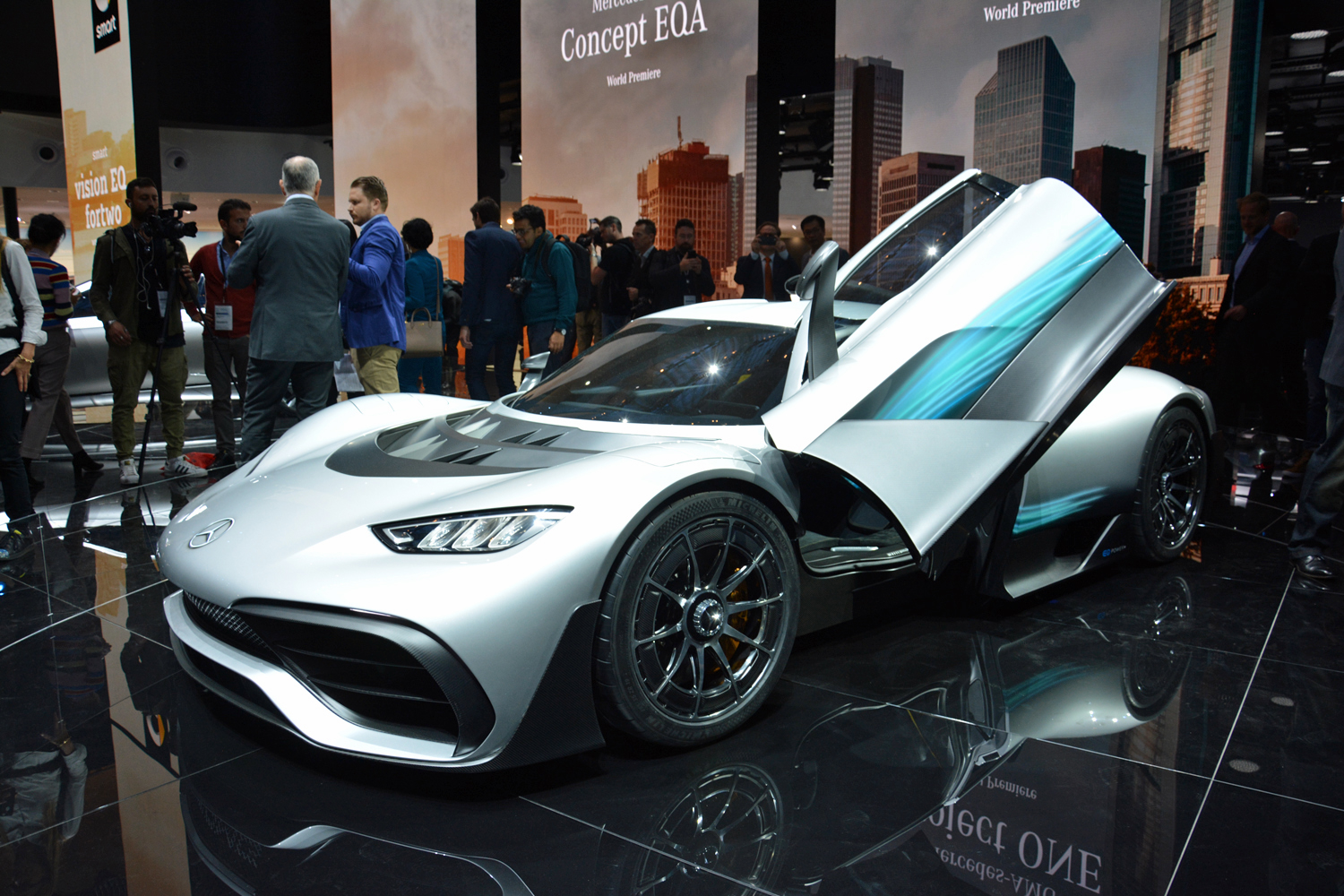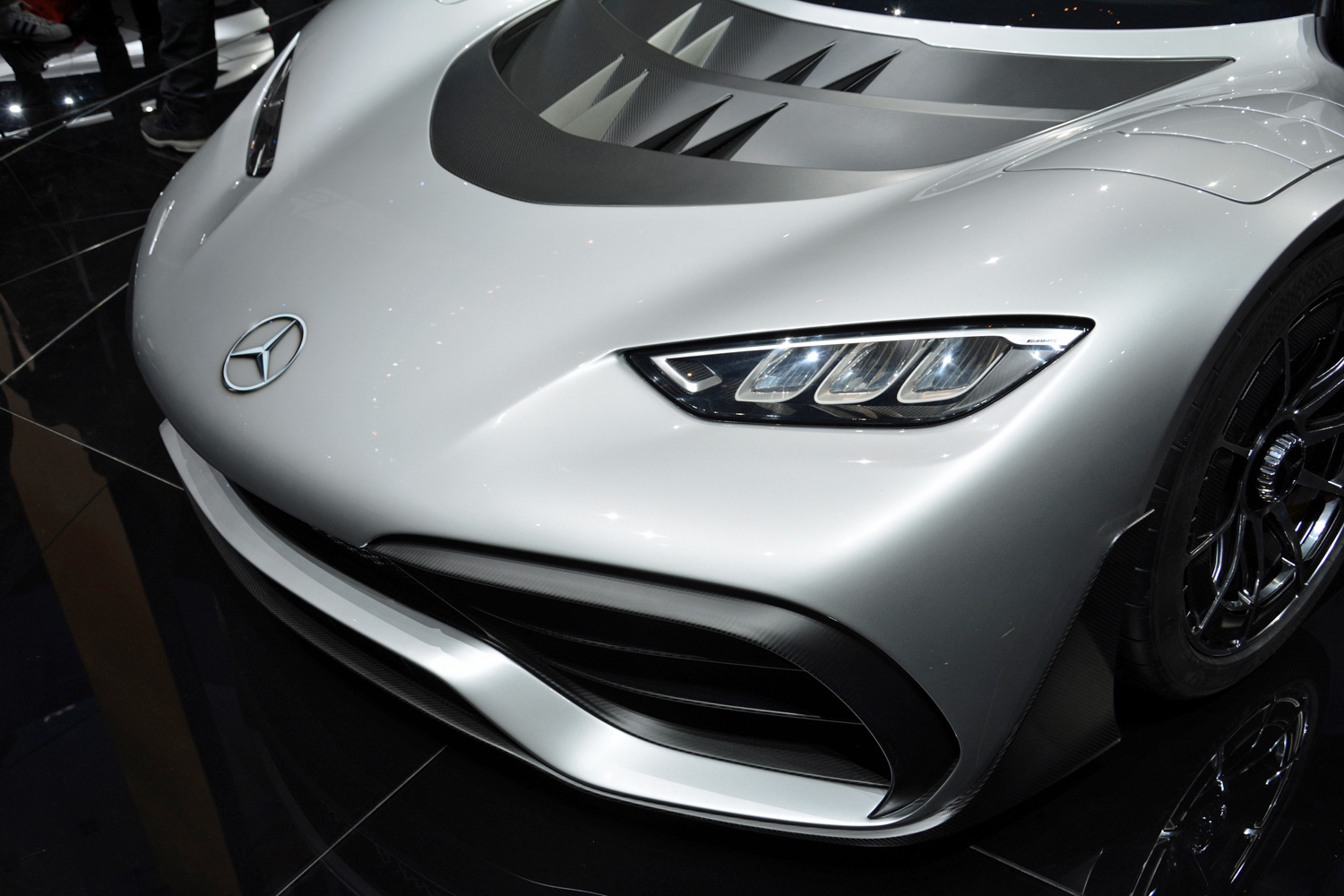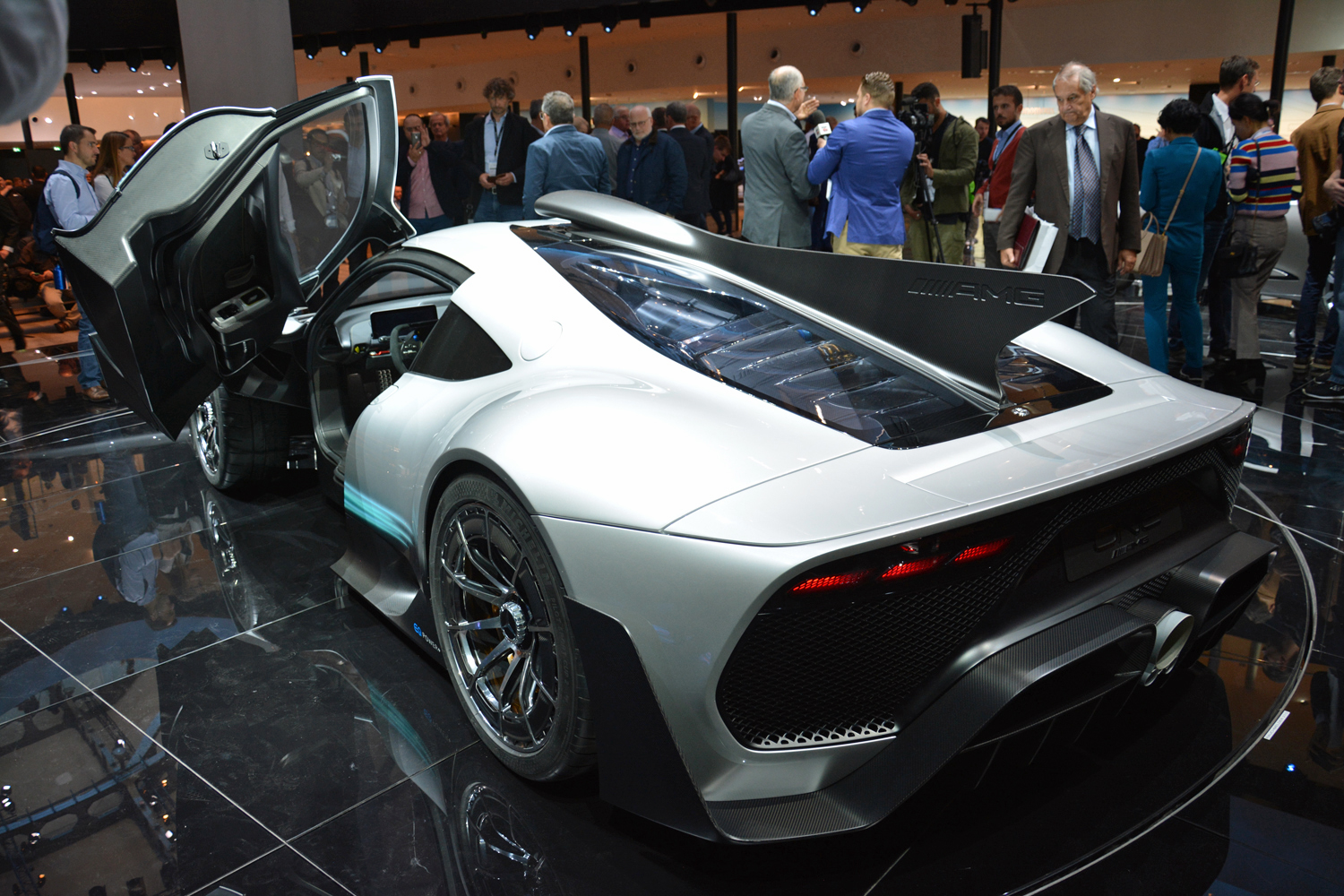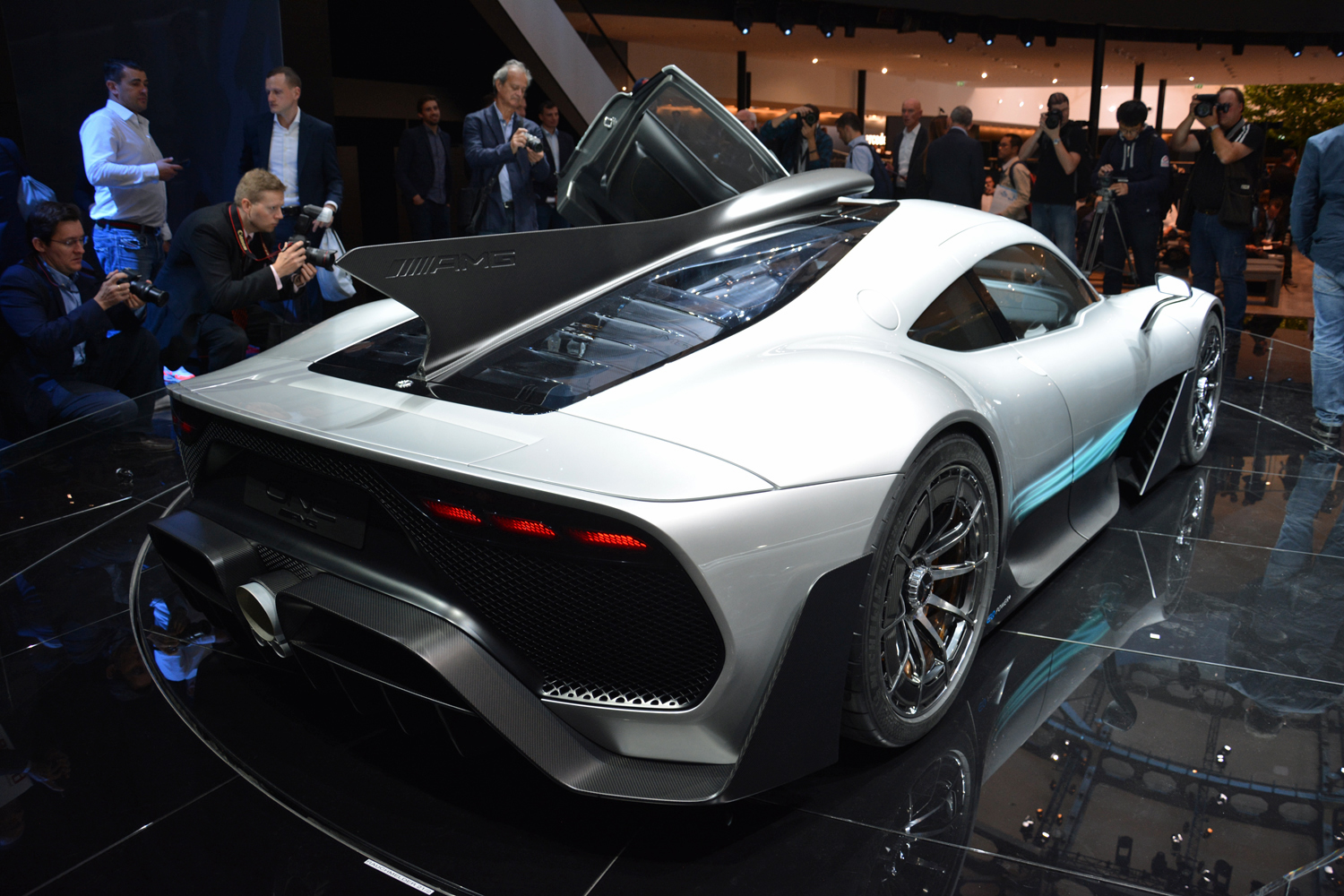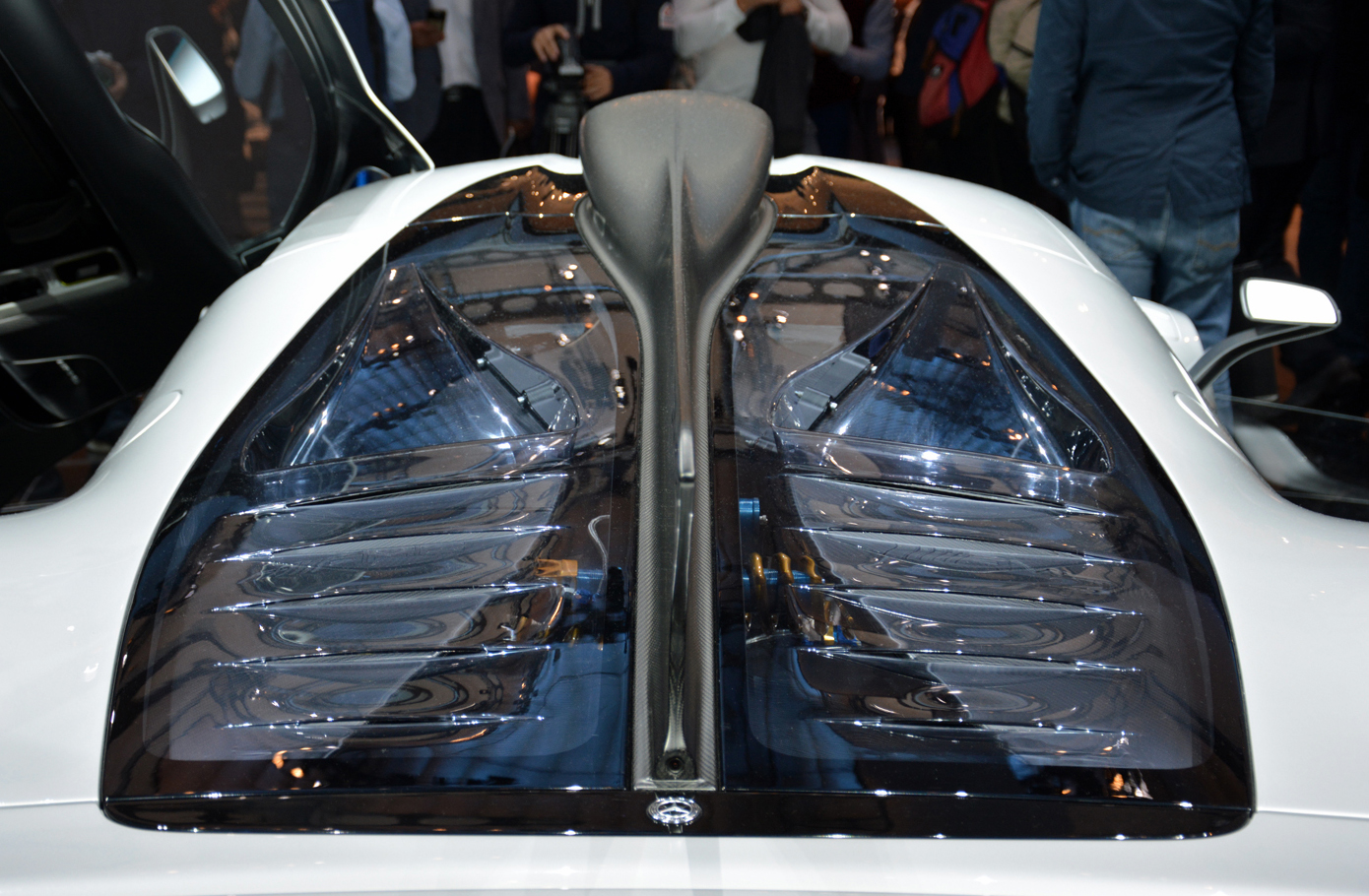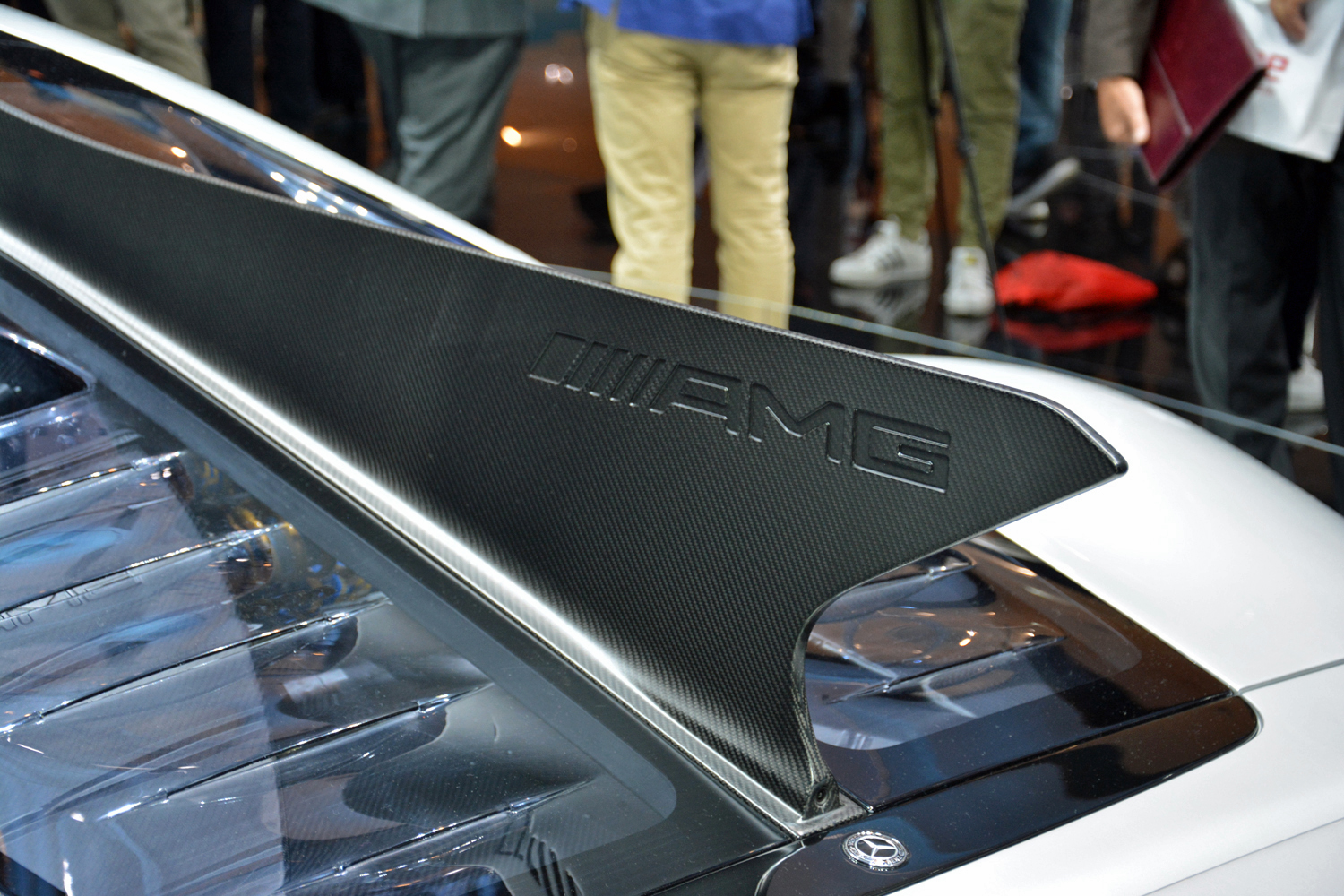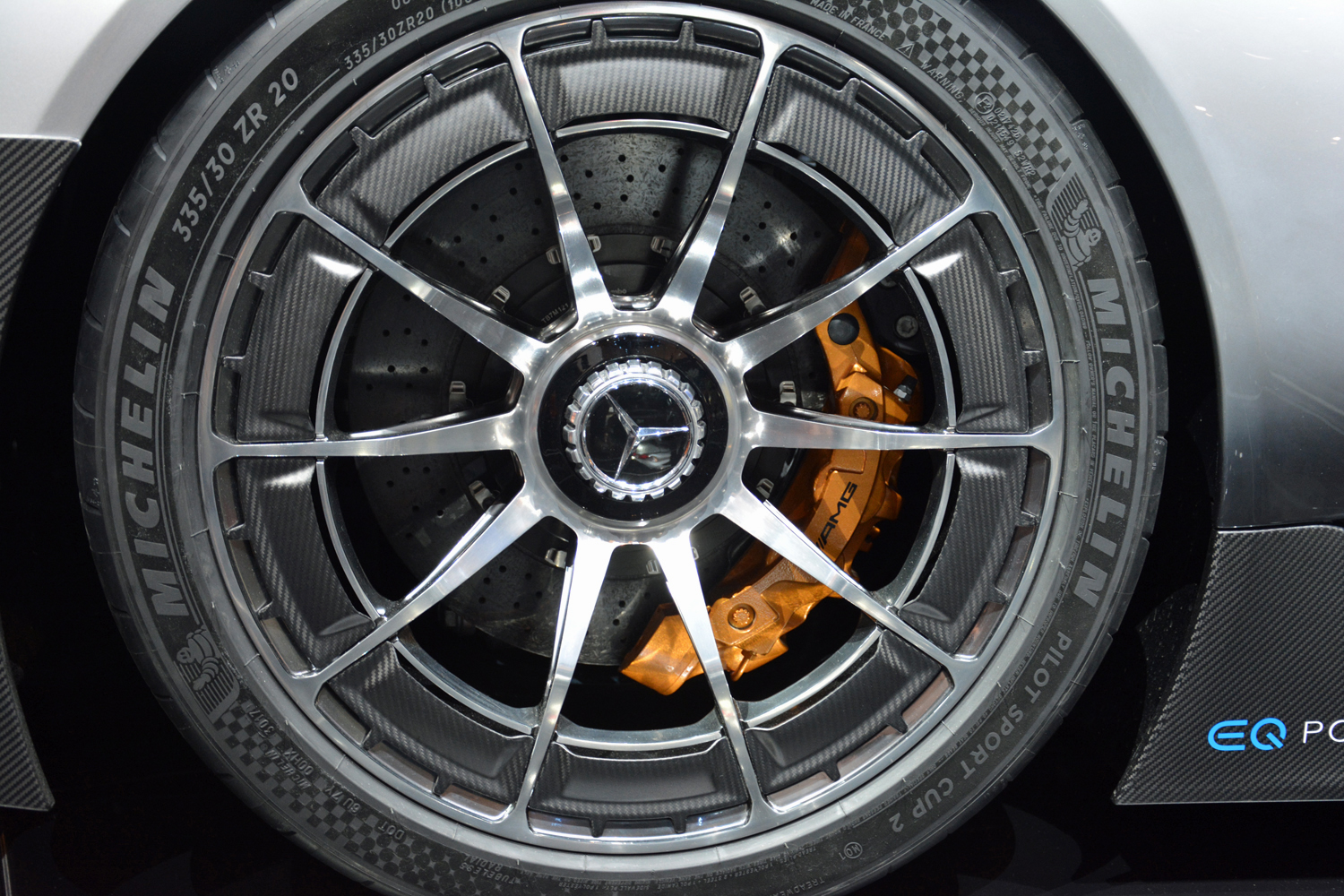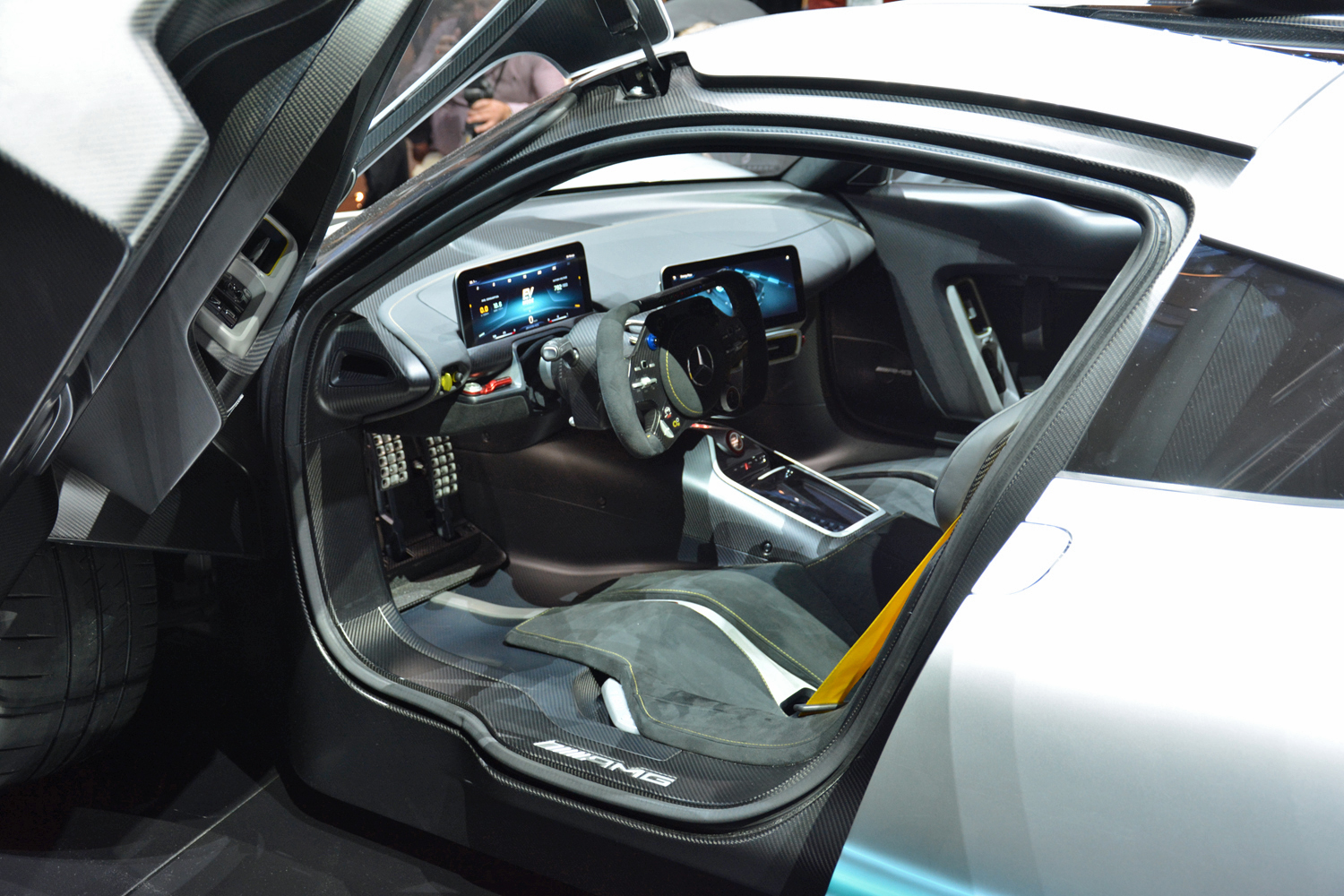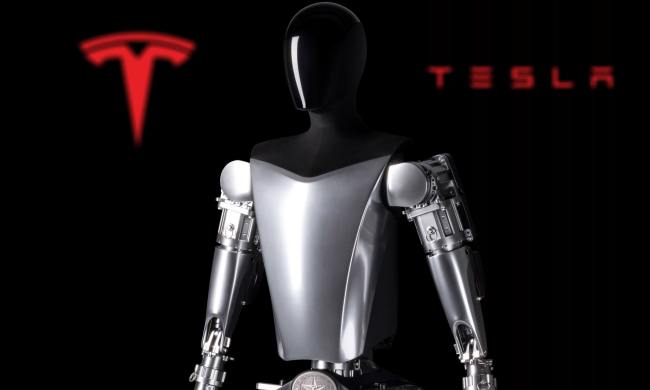Mercedes-Benz’s AMG performance division turns 50 this year, and its engineers created one hell of a birthday present.
Debuting at the 2017 Frankfurt Motor Show, the Mercedes-AMG Project One is a supercar with the heart of a Formula One racer. While many automakers claim to have built “race cars for the road,” the Project One literally incorporates major components from Mercedes’ championship-winning F1 cars.
That starts with the 1.6-liter turbocharged V6 engine, which comes directly out of the race cars. It sits behind the driver and can rev up to a ludicrous 11,000 rpm, which Mercedes claims is a new high for a road car. The V6 is assisted by four electric motors: two that power the front wheels, one that helps the V6 drive the rear wheels, and another that spools up the turbocharger.
All of these sources are good for a combined output of more than 1,000 horsepower, according to Mercedes. The German automaker also promises a top speed in excess of 217 mph.
But the Project One isn’t just about raw power. Like a Formula One car, it recovers electricity from braking or from the exhaust gases flowing through its turbocharger. It’s also a plug-in hybrid, so it can be recharged by plugging into a wall outlet. Should you get sick of 1,000 hp, the Project One has an all-electric mode where the car is driven using only the motors on the front axle.
The engineering geekery doesn’t stop there. To transfer power from the gasoline V6 to the rear wheels, the Project One employs what Mercedes calls an “automated eight-speed manual transmission.” The driver can leave it in automatic mode, or shift manually with steering-wheel mounted paddles. Both the transmission and engine are also load-bearing parts of the chassis, just like in an F1 car. Other bits of high-performance hardware include pushrod suspension, center-lock aluminum wheels with carbon-fiber aerodynamic covers, and carbon-ceramic brakes.
It’s too bad all of that impressive engineering couldn’t be wrapped in a more attractive shape. Like many current supercars, the design of the Project One was dictated by aerodynamics. But with its somewhat bulbous overall shape and gaping front air intakes, the Project One doesn’t seem to have struck the balance of form and function of, say, a P1 or Ford GT.
The interior is all business. The two heavily-bolstered seats are squeezed closely together, so the driver and passenger will definitely get to know each other. The rest of the interior is pretty barren except for a pair of 10.0-inch display screens. In true Formula One style, the steering wheel is covered in buttons that control things like driving modes and suspension settings.
With its F1-derived powertrain, the Mercedes-AMG Project One could help restore the connection between road cars and race cars. When the Project One goes into production (reports indicate sometime around 2020), it will cost 2.275 million euros (about $2.7 million) and only 275 copies will be made.
